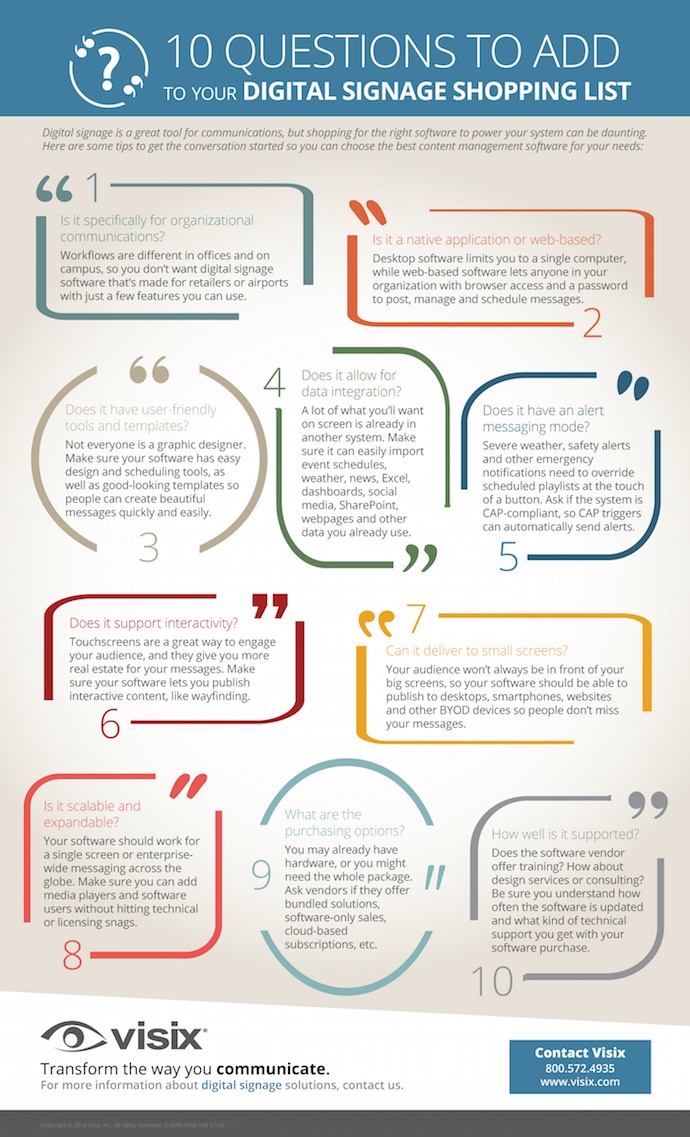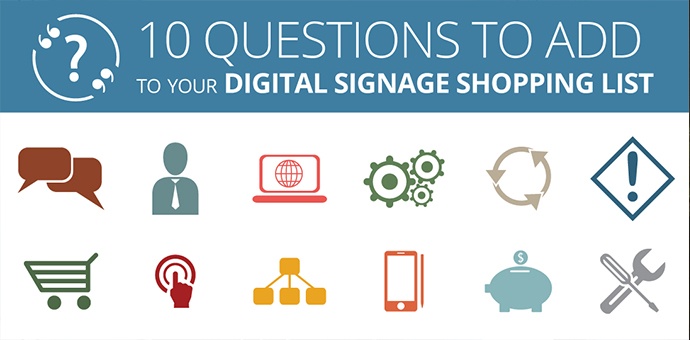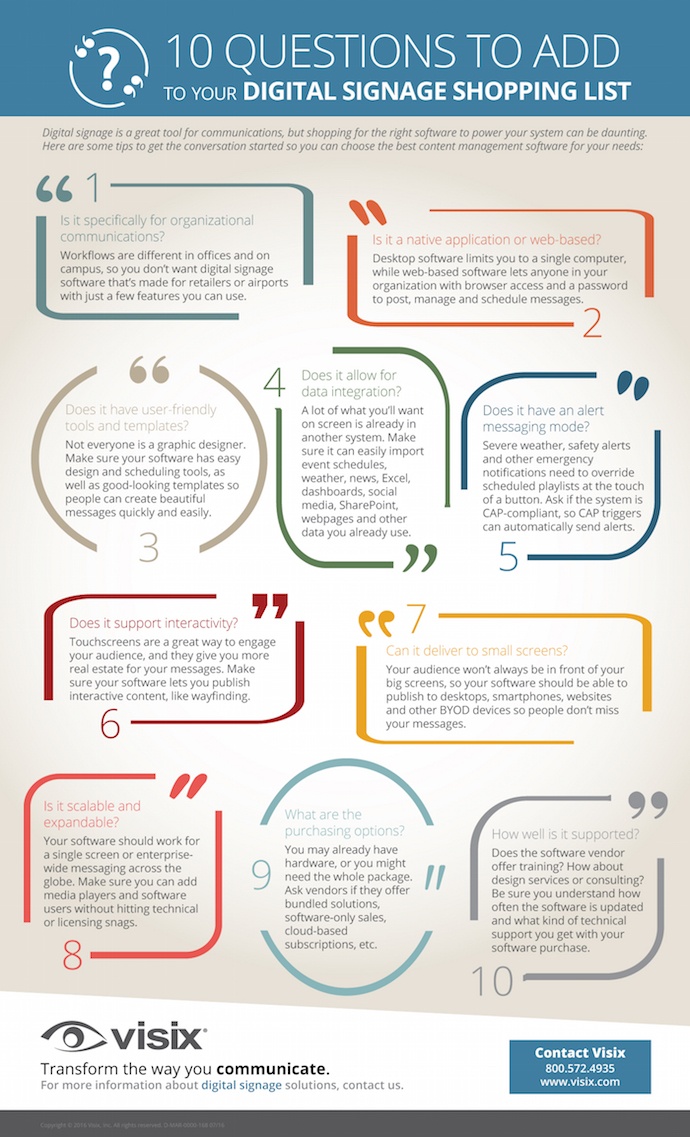
10 Questions To Ask When Buying Digital Signage Software
December 8, 2016 by guest author, Bryan Crotaz

Guest Post: Trey Hicks, Visix
So, your organization is considering a digital signage system, and you’ve been tasked with gathering info. Where to start?

Trey Hicks
It’s a massive market and getting bigger all the time. Just typing in the term “digital signage” into Google results in 14 million results, and there are an awful lot of companies out there offering anything from subscription services to multi-million dollar deployments, and everything in between.
How are you supposed to make any headway?
To help you sort it out and focus on what you really need, here are 10 questions you should ask when shopping around for content management software:
1. Is it specifically designed for organizational communications?
A lot of what’s available out there is for specialty applications like retailers and airports. And while some of your audience might be visitors, your main focus is likely on internal communications.
Different kinds of organizations have different needs and workflows. A university is not the same as a hospital, and a manufacturing center is another thing altogether. A company with a single office will use digital signage differently than one that’s spread out across a campus, or in multiple cities or countries.
Make sure the software is specifically designed for organizational communications. It should offer enterprise features like Active Directory authentication, and administrators should be able to assign predefined user roles, or create custom roles to provide the right level of privileges for each user.
2. Is it a native application or web-based?
If you only need one person to run the whole system, then a native desktop application is fine. But if you want more people in your organization to participate in message creation, you’ll want software that’s web-based or hosted in the cloud. This lets anyone with verified credentials post, manage and schedule messages from anywhere in the world with an internet connection.
3. Does it have user-friendly tools and templates?
Not everyone is a graphic designer, and no one has time to waste. You’ll want your software to have easy design and scheduling tools so people can publish beautiful messages quickly and easily. Some folks may have programs they prefer using, like PowerPoint, so you also want the software to be able to import common file types. The more user-friendly the interface is, the more people will get involved, and the more dynamic your whole system will be.
4. Does it allow for data integration?
A lot of what you’ll want to show on screens is already in another system you’re using, and you don’t want to double your workload by having to create separate messages. Make sure your software can easily import event schedules, weather, news, Excel, dashboards, social media, SharePoint, webpages and other data you already use.
5. Does it have an alert messaging mode?
No matter what type of organization you have, you’ll want to fold your digital signage system into your crisis communications plan. Severe weather alerts, safety notifications and other emergency messages should be able to override scheduled messages on all screens at once, or selected screens, at the push of a single button. And ask potential vendors if the software is CAP-compliant, so CAP triggers can automatically activate alerts.
6. Does it support interactivity?
You should definitely consider buying touchscreens either now or in the future, because it gives you a lot more screen real estate to work with, and audiences are beginning to expect it. We’re used to touching, zooming and swiping multiple screens to get info. Be sure your content management software lets you publish interactive designs for directories, wayfinding, donor boards and so on.
7. Can it deliver to smaller screens?
Your audience won’t always be right there at one of your displays, and you don’t want people to miss an important message (especially an alert), so your software should have the capability to push content to desktops, websites and BYOD devices, like tablets and smartphones. Remember that anything with a screen can be a digital sign, and your software should know that.
8. Is it scalable and expandable?
Your software should work for a single screen or enterprise-wide messaging across the globe. You also want a system that can be easily expanded. Don’t get something with limited features and no scalability just because it’s cheap. Think about the long-run costs and where your system will go in the future. Make sure you can add media players and software users without hitting technical or licensing snags.
9. What are the purchasing options?
Do you need everything for your digital signage system, or do you already have the hardware? Talk to potential vendors about different options, like software-only, bundled solutions or cloud-based subscription services. The more options available to you, the more likely you are to find exactly the fit for your needs.
10. How well is it supported?
Does the vendor offer training? Ongoing, or one-time only? What about consulting and design services to help optimize your deployment? To successfully launch and maintain your system, you’re going to need some help. Be sure you understand how often the software is updated, and what kind of technical support you get with your purchase.
If you’re going to spend a chunk of money and time putting a digital signage system in place, make sure you know all your options, outline your needs in advance, and get the right software for the job.




Leave a comment